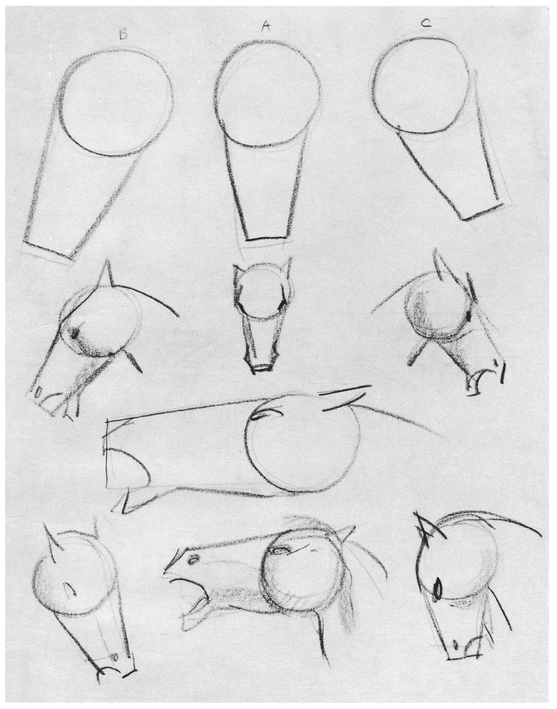SEEING ANIMALS AND DRAWING THEM
 DRAWING ANIMALS AND BIRDS presents the same problems involved in drawing human beings. The main problem, broadly stated, is learning to see. Once you have done that, you have acquired the essence of the artists craft. Having that essence, you need merely to acquire methods of putting down on paper what you have seen. For the artist, seeing is not just the process of looking at things, which is the normal function of the eye. For him, seeing means examining with emotion, taste, interest, discrimination, and above all with elimination of nonessential detail. In that sense, seeing combined with craftsmanship will produce good drawing, perhaps even art creation. And craftsmanship is easily learned if the student wants to learn it. through study in class, from books, and with practice. Talent is not indispensable.
DRAWING ANIMALS AND BIRDS presents the same problems involved in drawing human beings. The main problem, broadly stated, is learning to see. Once you have done that, you have acquired the essence of the artists craft. Having that essence, you need merely to acquire methods of putting down on paper what you have seen. For the artist, seeing is not just the process of looking at things, which is the normal function of the eye. For him, seeing means examining with emotion, taste, interest, discrimination, and above all with elimination of nonessential detail. In that sense, seeing combined with craftsmanship will produce good drawing, perhaps even art creation. And craftsmanship is easily learned if the student wants to learn it. through study in class, from books, and with practice. Talent is not indispensable.
The average intelligent person who loves his pets or admires the movements and grace of animals and birds can learn to draw them. Toward that end this book is planned to help him in two respects: First, to see them in their simplest basic forms of structure. Second, to learn the approaches to drawing animals and birds so as to capture their essential character and at the same time eliminate superficial details.
The superficial details make the problem of drawing appear, at first glance, too complicated for the, amateur and even in many cases for the professional artist. Experienced artists, excellent draftsmen, faced with the necessity of drawing a horse or a dog, have been known to pale. Their anatomy studies did not include animals; therefore they considered animals too difficult to attempt.
But an artists ability to draw should not be limited in any degree, and he should be able to say anything he wishes with his pencil. He should make a determined effort to know the animal he wants to draw rather than to know its anatomy. He should make a study of the general characteristics of the animal, then draw it as it appears to him through his feel of it. Its character is more important and expressive than the exact number and placement of its bones. For ferocity, lines will be bold and strong; for stealth, they will be subtle and tend to smoothness.
SKETCHING
 THE BEST ADVICE to those who love animals and would like to draw them is to fill many sketchbooks with drawing notes. Animals will not consciously pose for you. They move quickly and every movement is worthy of study because every action of an animal is a complete expression.
THE BEST ADVICE to those who love animals and would like to draw them is to fill many sketchbooks with drawing notes. Animals will not consciously pose for you. They move quickly and every movement is worthy of study because every action of an animal is a complete expression.
Sketch them in every position and moodrelaxed, active, calm, angry, eating, fighting. Get to know them intimately. To the degree that you know them well, you will draw them well.
Combine your understanding of animal character with the structure plans shown on the facing page and on other pages of this book; thus you will develop any latent talent for drawing that you may have.
MATERIALS
 BECAUSE ANIMALS ARE RESTLESS as a rule and their movements fleeting and unpredictable, it is best to use a quick medium for drawing notes. Oil paints and water colors require much setting up and preparation to be feasible for animal sketching. Pencil, Cont crayon, pen and ink, dry brush, or color crayons are the best quick materials, and they make entirely satisfactory notes for elaboration into any other medium.
BECAUSE ANIMALS ARE RESTLESS as a rule and their movements fleeting and unpredictable, it is best to use a quick medium for drawing notes. Oil paints and water colors require much setting up and preparation to be feasible for animal sketching. Pencil, Cont crayon, pen and ink, dry brush, or color crayons are the best quick materials, and they make entirely satisfactory notes for elaboration into any other medium.
Human and Animal Arms and Legs, Compared in Similar Movement
BASIC FORMS
 THE TWO CIRCLES ARE THE BASIC FORMS for the drawing generalization in this book, because with few exceptions this two-circle principle can be applied to the drawing of all animal torsos.
THE TWO CIRCLES ARE THE BASIC FORMS for the drawing generalization in this book, because with few exceptions this two-circle principle can be applied to the drawing of all animal torsos.
These circles are the key forms used to construct the torso. From them is suspended the barrel of the body. The neck form and forelegs are joined to one, the tail and hind legs to the other.
HORSES
 ALTHOUGH HORSES ARE AMONG THE MOST BEAUTIFUL and graceful of animals, they possess great strength. This combination makes for subtle lines. To capture this subtle strength and beauty with a pencil requires considerable observation of horses and much practice in drawing them.
ALTHOUGH HORSES ARE AMONG THE MOST BEAUTIFUL and graceful of animals, they possess great strength. This combination makes for subtle lines. To capture this subtle strength and beauty with a pencil requires considerable observation of horses and much practice in drawing them.
There are, however, a few basic forms that can be used in learning the construction and action principles of horses that will help greatly in acquiring the ability to draw them.
Most people find it difficult to draw the leg movements of horses and to represent their gait. In the following pages, forms of the body and the legs of the horse have been reduced to a few simple principles that can serve as working drawings upon which to build the details that will give the drawing more finish. The leg parts have been conventionalized, and the movements are shown in their most direct functional action. Study these exercises and make many similar simple chart drawings of your own. You will soon find that drawing a horse in any position or action is a simple process of basic design, and this basic design applies to almost all animals as well as to horses.
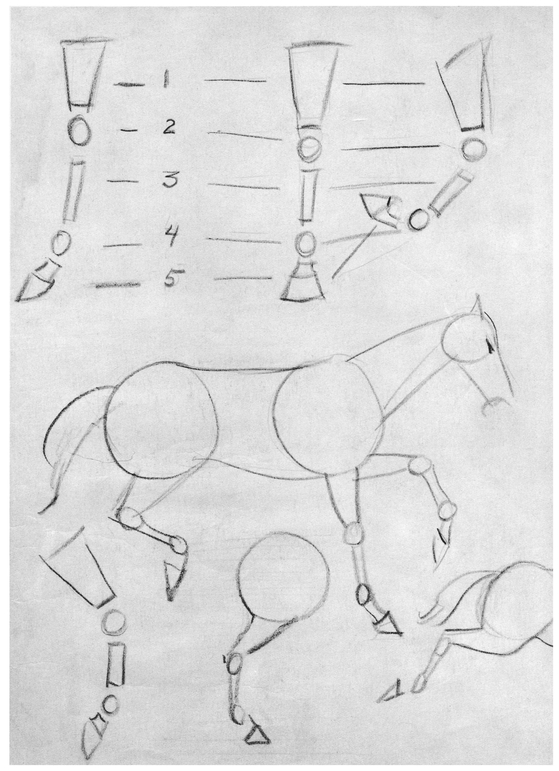
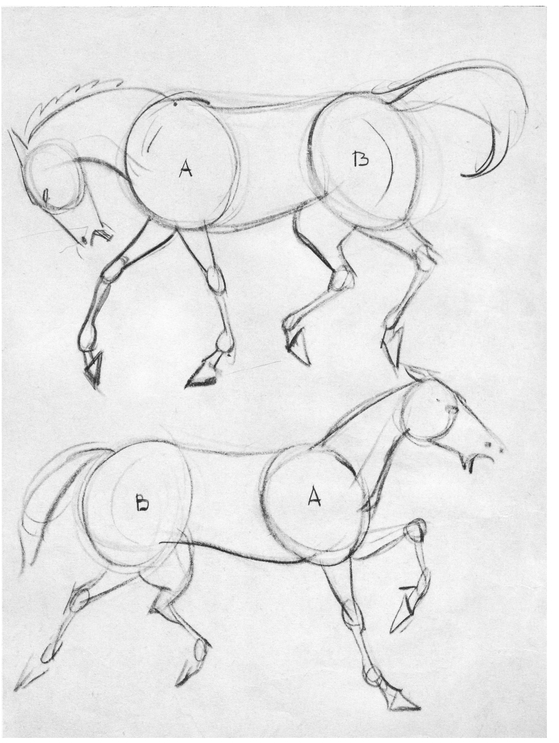

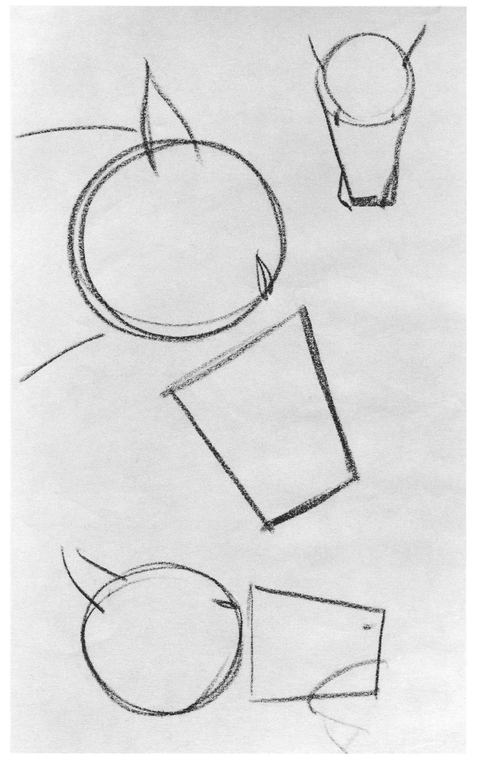
The head of the horse may be contained in two basic forms. Within these two shapes will fall all the detail that will finish the drawing. Practice drawing these two shapes in the various positions indicated on the following pages in order to show the turn of the head. As you do so, notice the way the head is joined to the neck.

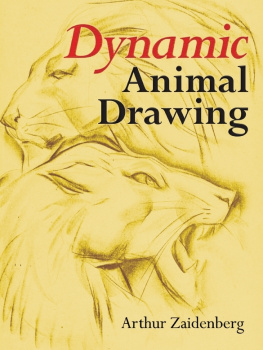
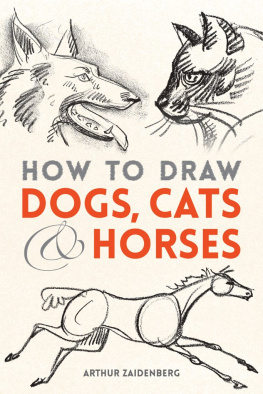
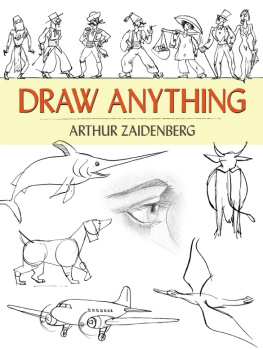
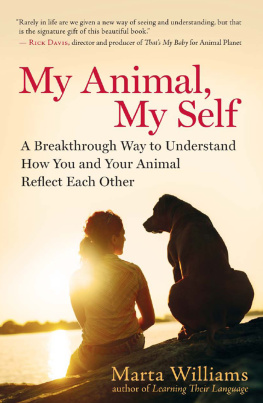
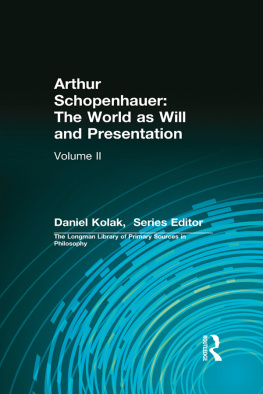




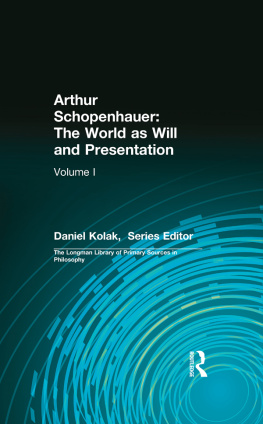
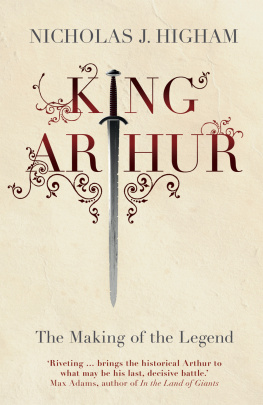


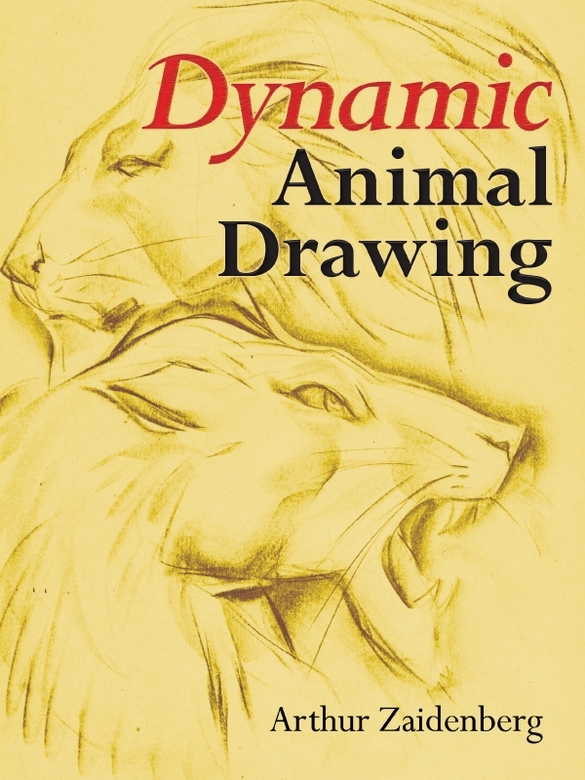
 DRAWING ANIMALS AND BIRDS presents the same problems involved in drawing human beings. The main problem, broadly stated, is learning to see. Once you have done that, you have acquired the essence of the artists craft. Having that essence, you need merely to acquire methods of putting down on paper what you have seen. For the artist, seeing is not just the process of looking at things, which is the normal function of the eye. For him, seeing means examining with emotion, taste, interest, discrimination, and above all with elimination of nonessential detail. In that sense, seeing combined with craftsmanship will produce good drawing, perhaps even art creation. And craftsmanship is easily learned if the student wants to learn it. through study in class, from books, and with practice. Talent is not indispensable.
DRAWING ANIMALS AND BIRDS presents the same problems involved in drawing human beings. The main problem, broadly stated, is learning to see. Once you have done that, you have acquired the essence of the artists craft. Having that essence, you need merely to acquire methods of putting down on paper what you have seen. For the artist, seeing is not just the process of looking at things, which is the normal function of the eye. For him, seeing means examining with emotion, taste, interest, discrimination, and above all with elimination of nonessential detail. In that sense, seeing combined with craftsmanship will produce good drawing, perhaps even art creation. And craftsmanship is easily learned if the student wants to learn it. through study in class, from books, and with practice. Talent is not indispensable. THE BEST ADVICE to those who love animals and would like to draw them is to fill many sketchbooks with drawing notes. Animals will not consciously pose for you. They move quickly and every movement is worthy of study because every action of an animal is a complete expression.
THE BEST ADVICE to those who love animals and would like to draw them is to fill many sketchbooks with drawing notes. Animals will not consciously pose for you. They move quickly and every movement is worthy of study because every action of an animal is a complete expression.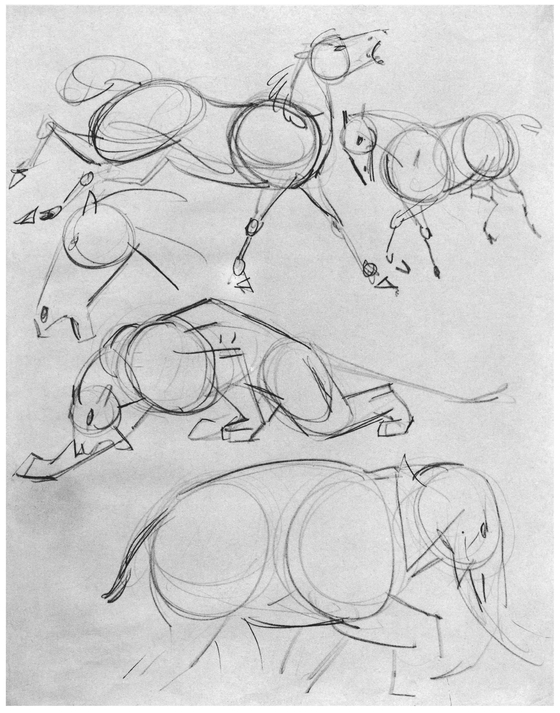
 BECAUSE ANIMALS ARE RESTLESS as a rule and their movements fleeting and unpredictable, it is best to use a quick medium for drawing notes. Oil paints and water colors require much setting up and preparation to be feasible for animal sketching. Pencil, Cont crayon, pen and ink, dry brush, or color crayons are the best quick materials, and they make entirely satisfactory notes for elaboration into any other medium.
BECAUSE ANIMALS ARE RESTLESS as a rule and their movements fleeting and unpredictable, it is best to use a quick medium for drawing notes. Oil paints and water colors require much setting up and preparation to be feasible for animal sketching. Pencil, Cont crayon, pen and ink, dry brush, or color crayons are the best quick materials, and they make entirely satisfactory notes for elaboration into any other medium.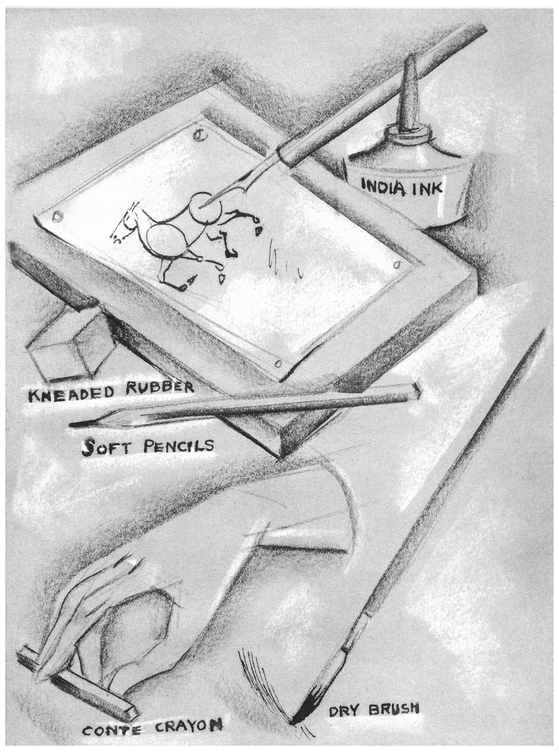

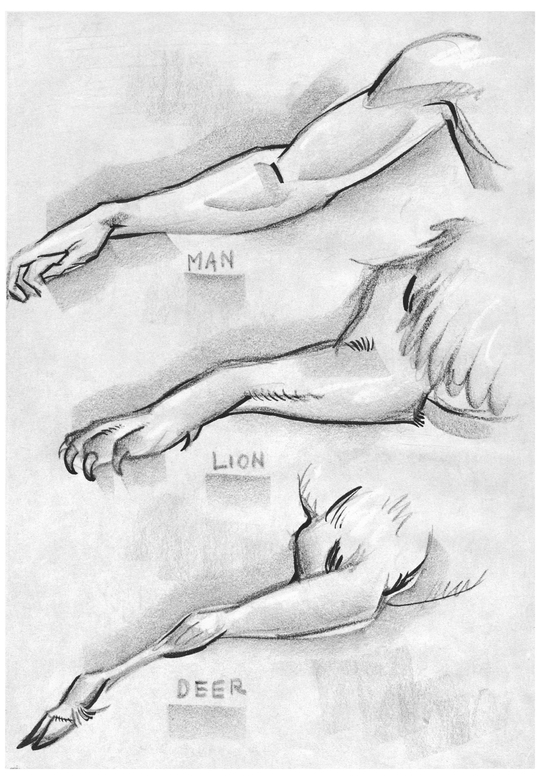
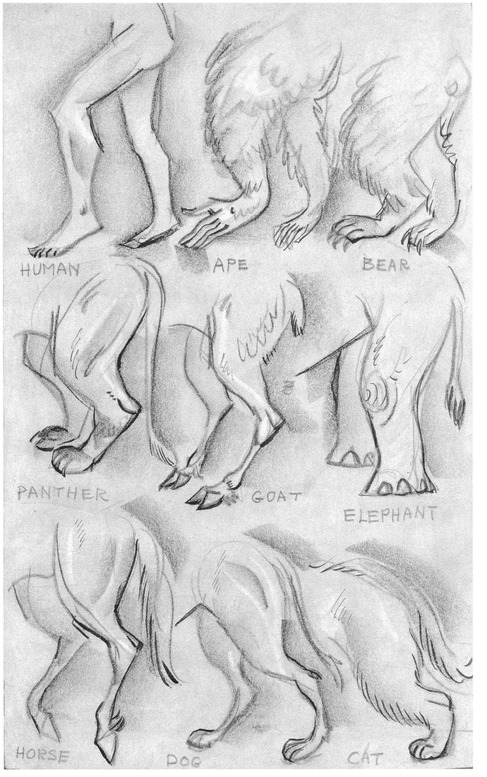
 THE TWO CIRCLES ARE THE BASIC FORMS for the drawing generalization in this book, because with few exceptions this two-circle principle can be applied to the drawing of all animal torsos.
THE TWO CIRCLES ARE THE BASIC FORMS for the drawing generalization in this book, because with few exceptions this two-circle principle can be applied to the drawing of all animal torsos.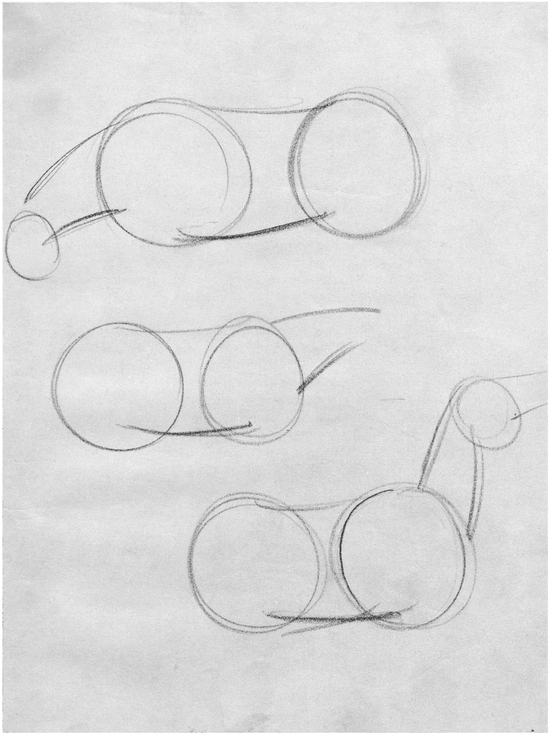
 ALTHOUGH HORSES ARE AMONG THE MOST BEAUTIFUL and graceful of animals, they possess great strength. This combination makes for subtle lines. To capture this subtle strength and beauty with a pencil requires considerable observation of horses and much practice in drawing them.
ALTHOUGH HORSES ARE AMONG THE MOST BEAUTIFUL and graceful of animals, they possess great strength. This combination makes for subtle lines. To capture this subtle strength and beauty with a pencil requires considerable observation of horses and much practice in drawing them.



